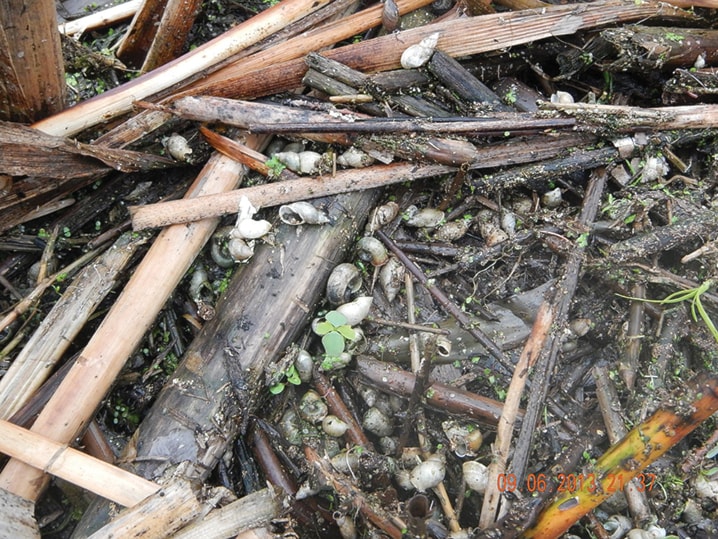A study at the University of Alberta is taking aim at microscopic wiggly-squigglies that can turn a nice day at the beach into a week or more of itchiness-scratchiness.
Swimmer’s itch, as it is called, is caused by a parasite that is shed from snails. Those parasites — there are at least five in Alberta that live in snails, and possibly 40 more — usually try to find natural host animals like ducks or muskrats after they leave snails.
But if a human happens to be in the wrong place at the wrong time, the little creatures will try to make their way into the skin. The good news is that a person’s immune system attacks and kills the parasite before it gets very far. The bad news is the resulting allergic reaction, an itchy rash that looks like a lot of mosquito bites all over the body.
Patrick Hanington, assistant professor with the School of Public Health at the university, said he has been studying the parasites and looking at ways to mitigate the problem of swimmer’s itch. He has also developed a website, that includes a voluntary survey for people to report swimmer’s itch locations, and information about the condition.
Hanington said of three major lakes in Central Alberta, he tends to see more frequent reports of swimmer’s itch at Buffalo Lake, rarely at Sylvan and none at Gull Lake. There are also reports of it occurring at Pigeon Lake and Buck Lake. Since May this year, 30 of Alberta’s lakes have had reports of swimmer’s itch.
Because the survey is voluntary and relies on the public, it could be occurring in other lakes but just not reported.
The university study began in 2013, and partly involves collecting samples every two weeks of snails from lakes north and south of Edmonton, including Buffalo and Gull Lakes, and studying the parasites that come out of them.
Infected snails are primarily found in the vegetation of a lake, usually within a couple of feet of water. Snails themselves are a food supply for other animals but they also help clean dead vegetation in lakes.
“Wading around in the shallow water, particularly near the vegetation, is the best way to increase your chances of getting swimmer’s itch,” Hanington said.
One of the ways to prevent the snail parasites from affecting humans may be the use of waterproof sunscreen, providing a bit of a barrier between the parasites and skin, he said. They are finding consistently that people who are using it are not affected.
The warm summer may be causing an increase of swimmer’s itch this year.
The life cycles of snails and the parasites are accelerated in warm temperatures — the snails are maturing slightly quicker and the parasites within the snails are maturing slightly quicker, Hanington said.
The design of beaches may help reduce swimmer’s itch, he said.
Aspen Beach’s beach at Gull Lake for example may be helping to prevent swimmer’s itch there. There is a boat launch that separates vegetation from the beach area. Another factor is the direction water moves, and whether it’s carrying parasites toward a beach or away from it.
Working with Alberta Health Services more in the future, Hanington said he hopes the study will help provide the public with information about where swimmer’s itch is occurring, whether to go swimming and ways to prevent it.
If a person does get swimmer’s itch, the itchiness can be treated with common over the counter anti-itch creams.
Hanington should know — he has suffered the itch himself in the past from swimming in a lake north of Edmonton. “I know what people go through.”
To fill out the survey and for more information on swimmer’s itch, and where it is occurring, go to swimmersitch.ca.
barr@www.reddeeradvocate.com
